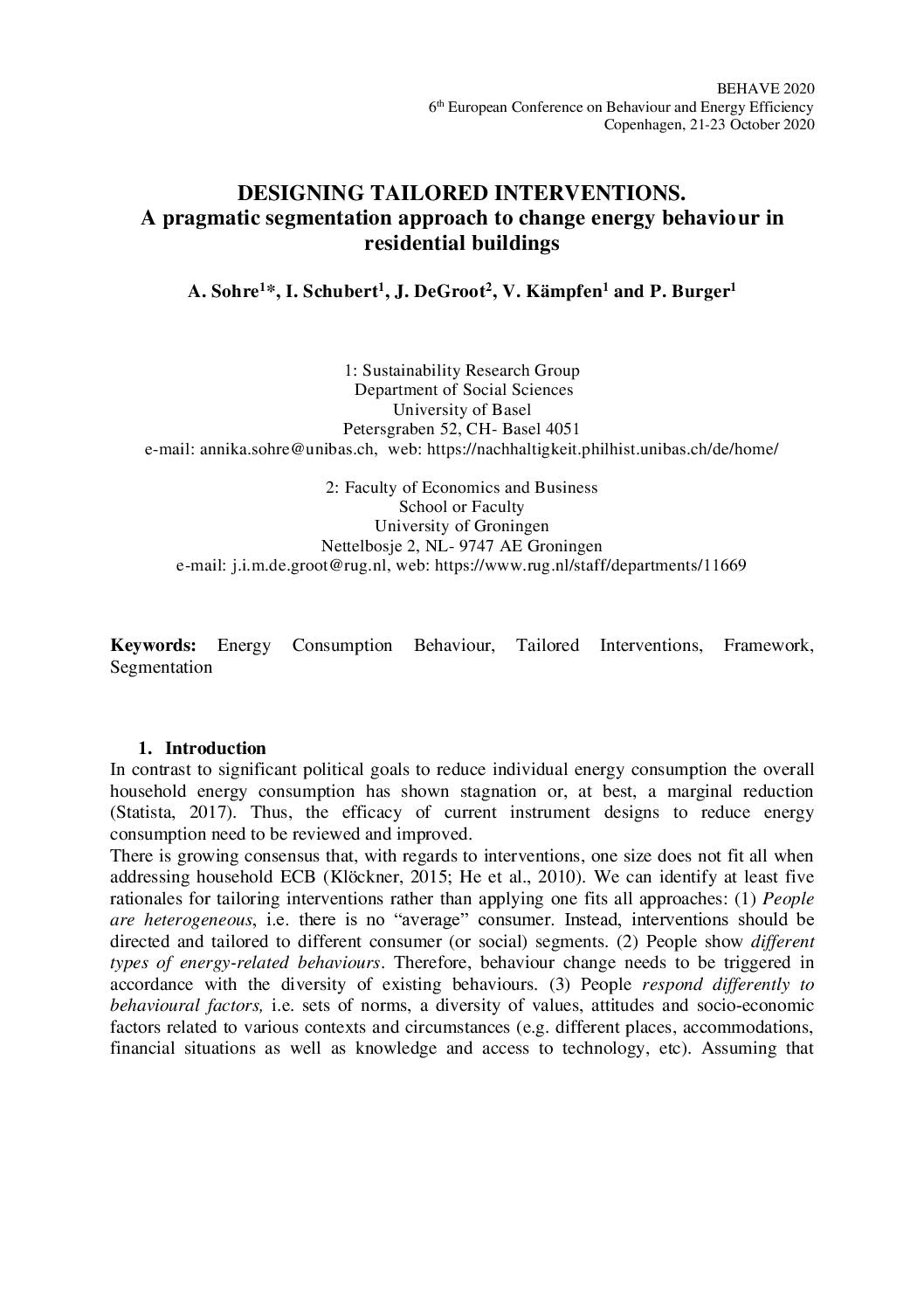In contrast to significant political goals to reduce individual energy consumption the overall household energy consumption has shown stagnation or, at best, a marginal reduction. Thus, the efficacy of current instrument designs to reduce energy consumption need to be reviewed and improved.
There is growing consensus that, with regards to interventions, one size does not fit all when addressing household ECB. We can identify at least five rationales for tailoring interventions rather than applying one fits all approaches: (1) People are heterogeneous, i.e. there is no “average” consumer. Instead, interventions should be directed and tailored to different consumer (or social) segments. (2) People show different types of energy-related behaviours. Therefore, behaviour change needs to be triggered in accordance with the diversity of existing behaviours. (3) People respond differently to behavioural factors, i.e. sets of norms, a diversity of values, attitudes and socio-economic factors related to various contexts and circumstances (e.g. different places, accommodations, financial situations as well as knowledge and access to technology, etc). Assuming that(combinations of) these factors are trigger points to change individual behaviours, it is reasonable to assume that they can be stimulated through tailored interventions. (4) People do not change their behaviour continuously/linearly, but behavioural change can be divided into different, no necessarily consecutive phases. Therefore, phase-based interventions have a bigger effect on behavioural change than temporally cross-cutting ones. (5) Finally, people respond differently to different types and combinations of interventions, e.g. rational information, price-based instruments or normative appeals. In addition, single interventions are less effective than consistent policy mixes. Without claiming tailored interventions are the key for a pathway with substantial decreasing energy consumption, we nevertheless identify tailoring interventions as an important element towards this change. The aim of this paper is to develop an approach to systematically set up tailored intervention strategies. We thereby want to answer the following research question: How can different types and packages of instruments be tailored to different groups of people, different types of ECB, different trigger points and different behavioural phases?
To answer these questions, we develop a framework including the above-named features of tailored interventions in a recommendation engine, designed in the Horizon 2020 Project UtilitEE. We, therefore, not only contribute to the scientific debate on tailoring interventions to change ECB but also address different governance actors, foremost utilities, to set up pragmatic intervention strategies.
Download sourceShare this

Sector: Buildings
Country / Region: Global
Tags: behavioral factors, climate governance, energy, energy utilities, engines for renewables, marketbased instruments, paper production, projects, stakeholders, sustainable livelihoods approachesIn 1 user collection: Session 2b: Behavioural insights for end-use energy efficiency in buildings
Knowledge Object: Publication / Report
Publishing year: 2020
Author: A. Sohre, I. Schubert, J. DeGroot, V. Kämpfen, P. Burger
Content:

